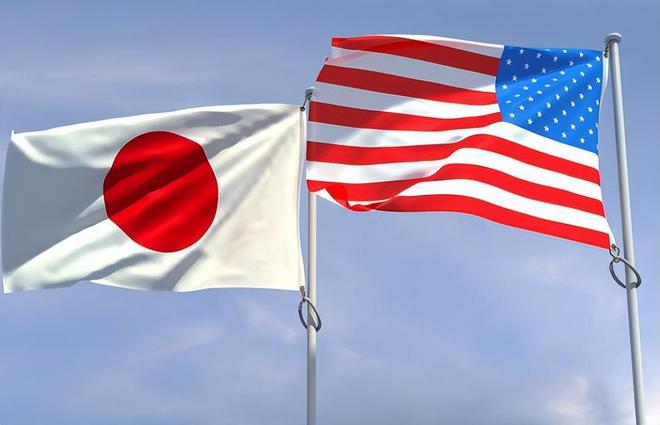Japanese Industry Minister Yasutoshi Nishimura and his U.S. counterpart Gina Raimondo agreed Friday to strengthen cooperation in the development of next-generation semiconductors.
During the Detroit meeting, they also affirmed the need to strengthen the global supply chain with other partners and through multilateral engagement such as the Indo-Pacific Economic Framework, an economic initiative led by the United States and involving 14 countries in the region last year.
A joint statement issued by Japan's trade ministers and the U.S. commerce secretary said they would encourage semiconductor research centers in both countries to work together to develop a roadmap for chip-related technology and human resources development. "We want to significantly accelerate Japan-U.S. cooperation, including on the development of future technologies," Nishimura told a news conference.
Areas of cooperation also include artificial intelligence, cybersecurity, and biorelated and quantum technologies, the statement said.
In a one-on-one meeting on the sidelines of the APEC ministerial meeting in the US city, the two countries also agreed to hold a second "two-plus-two" economic dialogue at an early date. "
Last July, the foreign and economic ministers of Japan and the United States held their first talks.
In the face of China's rising influence in the chip sector, Japan, the United States and their partners are stepping up efforts to build an enabling institutional system. They better protect key industrial materials. Nishimura and Raimondo agreed that Japan and the United States would work together to diversify chip production geographically, the statement said.

Japan joins the United States in restricting exports of chip equipment
This week, the Japanese government announced that new restrictions on exports of semiconductor manufacturing equipment will take effect on July 23. In March, Japan announced export controls on 23 types of high-performance semiconductor manufacturing equipment.
The new rules do not specifically target China, which is one of 160 countries, but China accounts for about 30 percent of its semiconductor manufacturing equipment exports, the largest share.
23 kinds of export control equipment cover semiconductor cleaning, film forming, photolithography, etching, detection and other links. Japan's ministry of Economy, Trade and Industry said the move was aimed at preventing semiconductors from being used for other purposes in response to an increasingly severe international security environment.
In response, China's Ministry of Commerce said it was an abuse of export control measures and a serious departure from free trade and international economic and trade rules, which China firmly opposes.
Since the Trump era, the United States has gradually imposed a chip embargo on China, and then extended it further to chip-making equipment. Back in 2018, at the request of the US, the Netherlands had banned its most advanced ultra-ultraviolet lithography machines made by ASML.
After taking office, Biden sought to further exclude China from the global chip industry chain. A White House security adviser said that whereas previously the argument for limiting chip exports was "just a few generations ahead of China", now "we have to do everything we can to maintain a sufficiently large lead".
Gregory C. Allen, a fellow at the Center for Strategic and International Studies in the United States, said the specific strategy could be reflected in four points: first, an embargo on high-end chips used in industries such as artificial intelligence; Banning the use of EDA software can block the chip research and development of Chinese enterprises; An embargo on U.S. -made semiconductor equipment to block the development of Chinese companies in high-end chip manufacturing; The embargo on semiconductor equipment parts and components, blocking the development of Chinese enterprises in semiconductor manufacturing equipment.
The first of these has already been achieved. On October 7th last year, the US Department of Commerce's Bureau of Industry and Security (BIS) announced new controls on chip exports. The embargo was then extended to manufacturing equipment and parts. Although the most advanced ultra-ultraviolet lithography machines have been banned from China, the country is also able to import the more widely used deep-ultraviolet lithography machines, which are produced only by Asml of the Netherlands and Nikon of Japan.
Us measures to ensure companies can maintain a competitive edge will need the co-operation of two industry giants, Japan and the Netherlands, to be effective, Reuters said.
In January, U.S. President Joe Biden met separately with the prime ministers of the two countries to work together to tighten export controls on advanced technology and arranged a three-way meeting to hammer out the details. In March, the Netherlands and Japan announced separate plans for export controls. This week, Japan announced a timetable.
"This will damage the market expansion of Japanese companies and will definitely reduce their competitiveness from a regulatory point of view," said Yoshimoto Suzuki, director of China economic research at Marubeni, a Japanese trading house. Without a big enough domestic chip market, the export restrictions will be a blow to Japanese chip equipment makers.
Currently, Japan's chip-making equipment industry is worth about $30 billion, with $10 billion in orders coming from China, the largest of any market.









